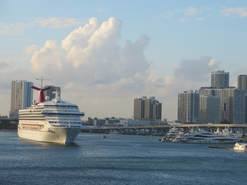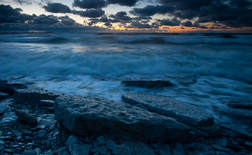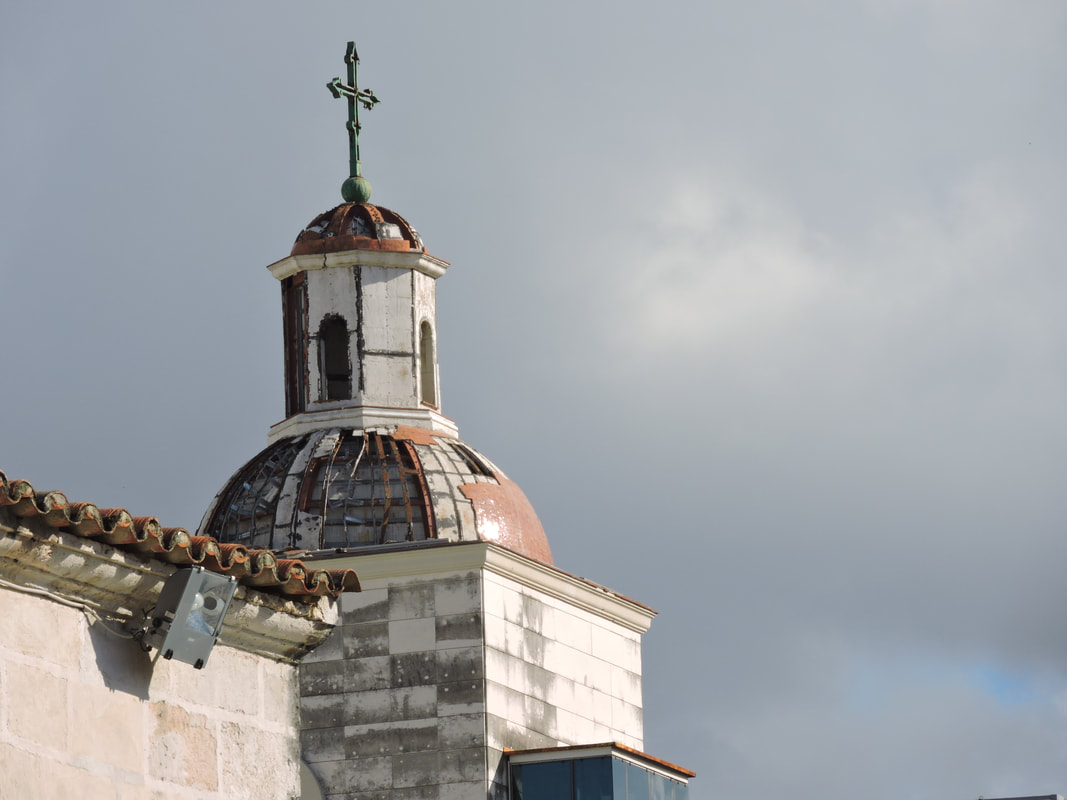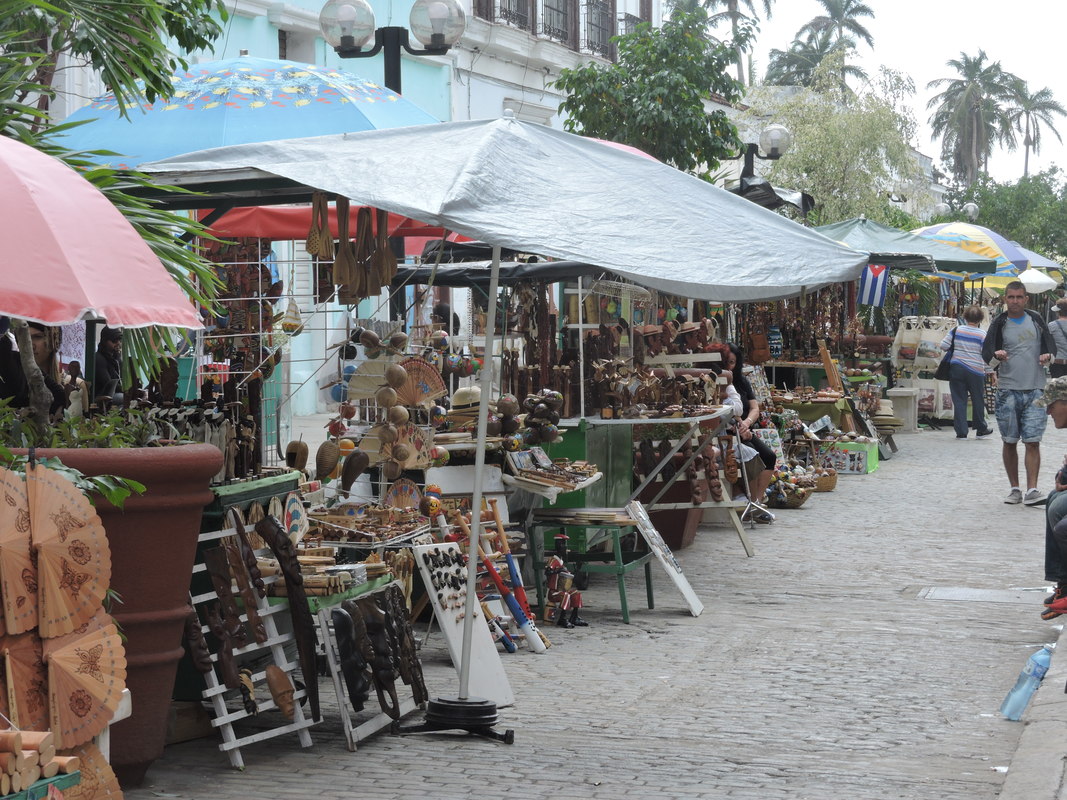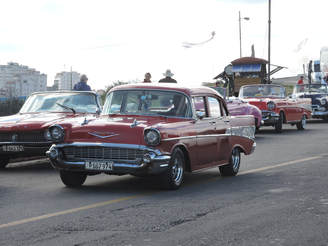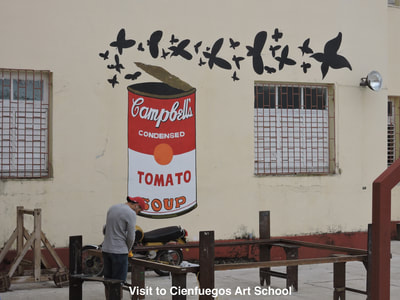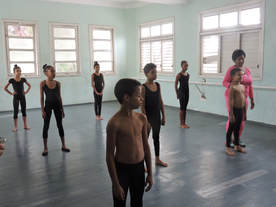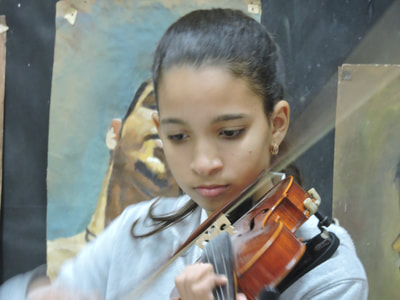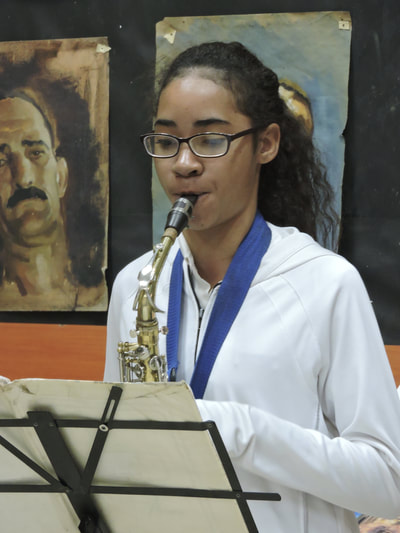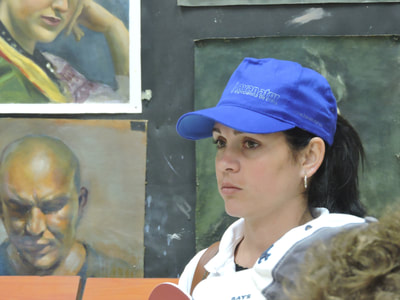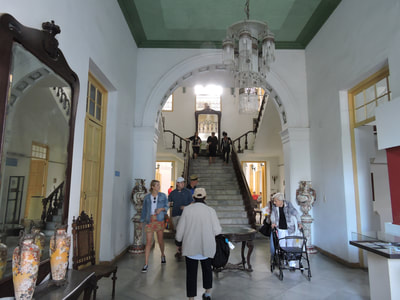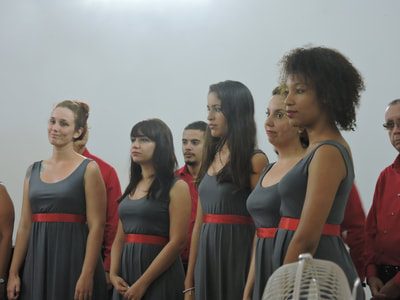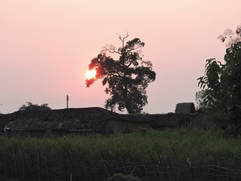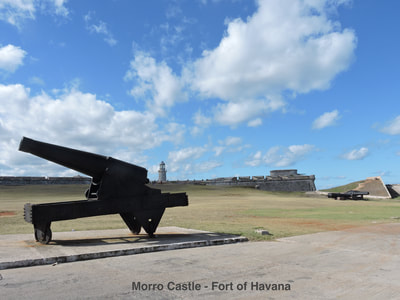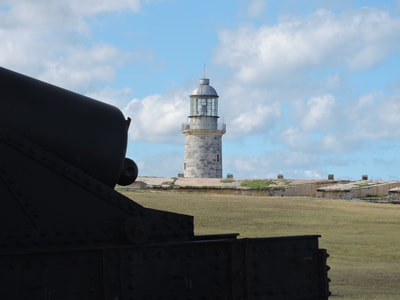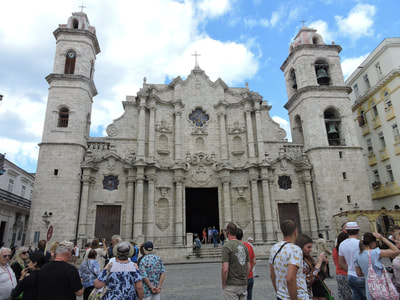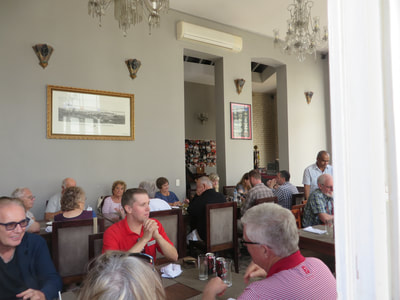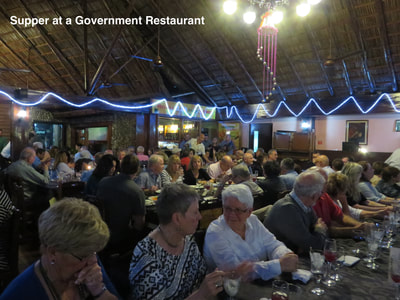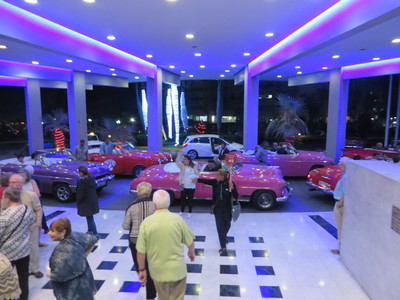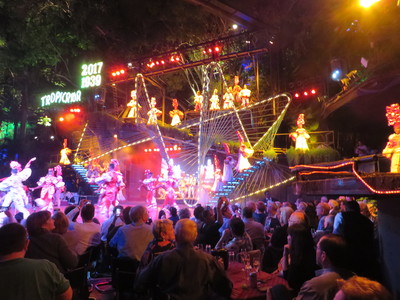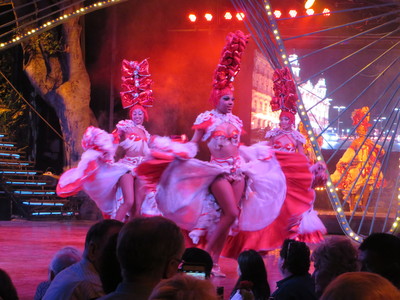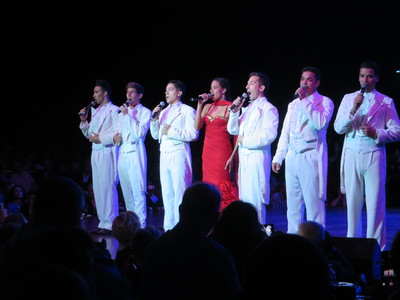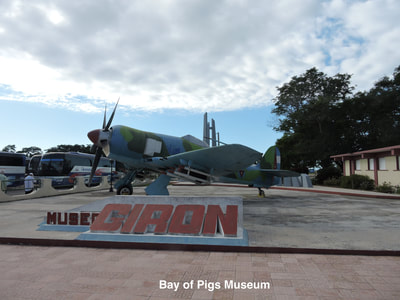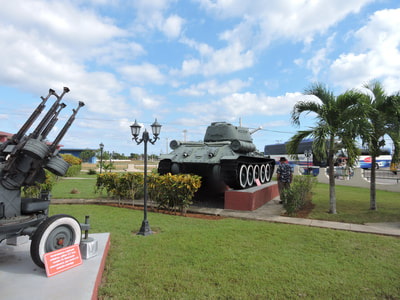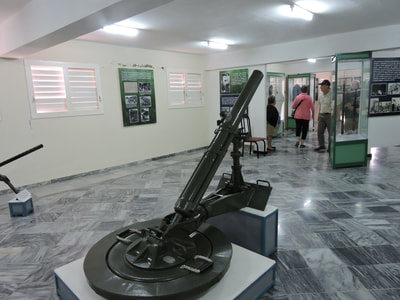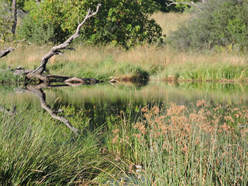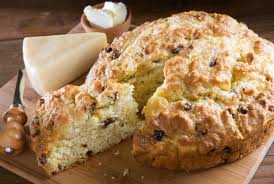For nearly sixty years, Cuba, a very close neighbor of the United States, has been a mysterious forbidden island which no American has been allowed to visit. And through the decades, because of the American trade embargo, Cuba became lost in time, free from all the trendy products that accompanied the invention of the computer, and utterly unscathed by American pop culture. During this interim, in spite of an economy of scarcity, Cuba’s own culture has thrived.
Since the death of Fidel Castro in 2016, his brother Raul has headed the Cuban government, and the animosity between Cuba and the U.S. has softened. It is now possible for Americans to obtain person-to-person cultural exchange visas to visit Cuba, and cruise ships and tour companies are happy to provide a stream of American tourists eager to learn about this ancient island, visited by Christopher Columbus back in 1492.
We were pleased to have the opportunity recently to cruise to Cuba from Miami and tour this beautiful island, filled with friendly, healthy and well-educated people eager to share their way of life with us.
|
|
In the twilight, a
Pair of dolphins follows
The cruise ship out to sea.
|
|
|
Near Key West, the sky
Turns black, rain plummets, and the
Ship rocks on high seas.
|
After two stormy days at sea, we anchored in the Bay of Cienfuegos, and took a tender ashore for our first look at Cuba. Cienfuegos is a UNESCO World Heritage Site because of its Spanish Colonial Neoclassical architecture with domed, brightly painted buildings and New Orleans style wrought iron upstairs balconies. Also in the Neoclassical tradition, the city itself is laid out in a neat symmetrical grid with all the streets parallel or perpendicular to each other. One striking blue building on the corner of the central square has a high dome that provides a view of the harbor. Sadly, it and all the other buildings in the city are in disrepair.
Fidel Castro’s government chose to emphasize health care, education and the arts over building maintenance and transportation. Today, Cuba has the highest literacy rate in the world with free education for all citizens, including access to advanced university degrees for those who wish to pursue higher education. Cuba also provides free health care for everyone, and has a very high ratio of doctors per capita. The government also actively supports the arts. Ironically, while Cuba is a poor country viewed by most Americans as part of the Third World, its citizens enjoy quality of life through excellent education, good health and access to music, dance and the visual arts. Perhaps someday, Cuba will also be able to afford to repair and renovate the beautiful buildings of Cienfuegos.
The old domed mansions
Of Cienfuegos crumble in
The winter sunlight.
|
|
Cienfuegos is a relatively young city—only two hundred years old. It was founded by French speakers from Louisiana, hence the New Orleans-style wrought iron architectural embellishments. As we toured this dilapidated and fading colonial town, we did not see a lot of other tourists around the central square, which was comprised of an old church, a city hall, a museum and a government-run cigar store. The side streets were filled with local entrepreneurs selling predictable souvenirs—Che Guevara tee shirts, Fidel Castro hats, wooden bead necklaces, maracas, baseball bats and little wooden models of old Chevrolets.
Indeed, the “antique” Chevrolets, for which Cuba is now famous, were readily available to hire as taxi cabs. These classic automobiles, reminders of the pre-revolutionary days when Cuba was a playground for wealthy Americans and mafiosos, have been lovingly maintained by their owners who have inherited them from their fathers and grandfathers. Because of the embargo, Cubans cannot obtain American auto parts, and Cuban mechanics have become remarkably inventive in finding ways to keep these old cars running and in good repair.
Most Cubans do not own cars, and horse carts are still widely used as a form of transport. Hitchhiking, and just standing around at the side of the road hoping to get a ride are daily realities for Cubans. Still, there was a cheerfulness about the Cubans we met and a genuine kindness and hospitality in their interactions with us. Also, we saw no beggars or homeless people in Cienfuegos, or anywhere else we visited in Cuba.
Our time in Cienfuegos was spent on a “Local Culture” tour, which turned out to be a delight. We visited a local public school (there are no private schools in Cuba,) where the curriculum focuses both on general education and the arts. Like all of the other buildings in Cienfuegos, the school was old, beat up and very dilapidated, but the students and teachers were smart, lively and competent. The children had been specially recruited from other schools because of their potential in either dance, music or visual art. We visited a class of ten-year-olds who were being coached by their dance teacher in a very rigorous workout of yoga-like floor exercises that included doing the splits while placing their entire upper bodies flat on the floor, then moving on to many additional difficult postures in quick succession. Then the children did a spontaneous free-form dance based on the teacher’s oral cues. Each child improvised being a seed growing up out of the earth into a tree and then returning to the earth. I was quite impressed by the children’s skill, fitness level and creativity.
|
|
Cuban children dance
Like divas on the dirty
Floor of their old school.
|
We also listened to solo music performances by two high school girls who played very skillfully, one on the saxophone and another on the violin. Then we visited the drawing and painting classroom where several art teachers were present. They are government certificated artists as well as teachers and are thus allowed to sell their art to tourists, though they were not at all pushy about it. Some of the work by both the students and the teachers, especially the classical style portraits, was very impressive.
After our visit to the school, we returned to the museum on the central square for a performance by the Cienfuegos adult professional choir. They sang beautifully a cappella, sometimes accompanied by traditional percussion instruments such as cowbells, miniature maracas, rhythm sticks, etc. The arrangements and rhythms were intricate and very creative. Each piece included solos by various members of the eleven-woman and seven-man choir, so that individual voices as well as group harmonies were highlighted. The director, a lively young woman named Honey Moreira, introduced each piece in excellent English.
The choir’s repertoire featured amazing variety, reflective of the diverse cultural influences in Cuban history and contemporary life. They sang African-inspired pieces, Cuban folk songs, an Argentinian composition, a Desi Arnaz song, and even an American gospel song in English, “Let’s Go Down to the River to Pray.” I loved every moment of the performance, and we bought a CD and a DVD. Though this is a government supported municipal choir, the members must do their own fundraising to support their travel expenses when they perform in other cities and even in other countries.
The next phase of our Cuban adventure included a road trip through the lush tropical countryside on our way to Havana. Along the bumpy road, we saw farmers at work tending their small farms with yards filled with dogs, chickens and goats and fields of beans and sugarcane. There were many horse carts and even teams of oxen pulling wagons. We saw no heavy farm equipment, not even a lawn mower to cut the weeds threatening to take over the narrow road.
|
Every mile a man
Stands by the roadside, cutting
Grass with a cycle.
|
|
As we approached Havana, larger and larger crowds of people were standing along the side of the road, apparently hoping to get a ride into the city for work. There were even some government officials among them, stopping cars and asking the drivers to take a few people along with them. Clearly, transportation is a challenge which Raul Castro or his successor will need to address.
|
|
In Old Habana,
A red Impala slows down
For a horse carriage.
|
Havana was founded by the Spanish conquistador, Diego Velazquez de Cuellar in 1515 after Christopher Columbus “discovered” the island of Cuba in his efforts to travel to India. The island was then inhabited by the Taino, a subgroup of the Arawak, indigenous people of the Caribbean and Florida. Unfortunately, the well organized and inventive Taino succumbed to diseases introduced by the Spanish, notably smallpox. When the Spanish realized that Cuba, unlike Mexico, lacked rich deposits of gold, silver and precious jewels, the island was used by the conquistadors as a shipping and transport hub as well as a strategic defense against pirates and other European invaders. Sadly, Cuba’s economy came to rely on slaves imported from Africa to work on the sugar cane and coffee plantations. The first slaves were brought to Cuba in 1513, and slavery was not abolished until 1886. In the government-operated stores we visited in Havana, rum, cigars and coffee still appear to be Cuba’s primary retail products.
As a Spanish colonial city, Havana’s architecture reflects its complex history. We visited El Morro, also referred to as Morro Castle. Built in 1640, El Morro is a fortress designed to protect Havana Harbor from European enemies such as the Dutch and the British. It is named after the three Biblical magi, and its official name is Castillo de los Tres Reyes del Morro. This huge stone edifice and lighthouse was designed by the Italian engineer Juan Bautista Antonelli and built by slaves using the rocks extracted from the moats that surround the castle.
Another Spanish colonial marvel is the Cathedral of the Virgin Mary of the Immaculate Conception, located in the central plaza of Old Havana over the remains of an older church. Built by the Jesuits in 1748, from blocks of coral extracted from the Gulf of Mexico, this lovely old church is considered one of the finest examples of Baroque architecture in Cuba. The ornate exterior features two asymmetrical bell towers while the interior, with its black and white marble floors, is decorated in a simpler, more Neoclassical style. While the government of Cuba has an ambiguous relationship with religion, this church still functions as the cathedral for the Archdiocese of San Cristobal de la Habana. The last three Popes have all visited Cuba, and as we toured the interior, I noticed a newish statue of Pope John Paul II, now canonized as a Saint.
While in Havana, we ate at both a paradar, (a privately-owned restaurant,) and a government-run restaurant. Both served roasted chicken with rice and beans followed by good espresso- style Cuban coffee. The family-run paradar is one of many such entrepreneurial ventures now being encouraged by Raul Castro. We found the food fresh and well prepared and the service friendly. Fresh vegetables, notably wonderful farm grown tomatoes, were also on the menu, with a very nice flan for dessert.
The large government-run restaurant probably better reflected the diet of everyday Cubans. To the accompaniment of a live band playing Cuban music, we were served roasted chicken, black beans and rice, fried plantain chips and coconut ice cream, accompanied by coffee with no milk or sugar on the table. I suspect that many Cubans are eating primarily the black beans and rice portion of this menu, and while this may seem to some visitors to be a rather sparse meal, I fell in love with Cuban black beans and rice and share a recipe with you at the end of this blog.
On our final evening in Havana, we took a trip back in time to visit to the cabaret show at the Tropicana Club, still entertaining fun seekers since 1939. We arrived in style in the back seat of a 1958 Edsel convertible taxi, painted metallic purple with purple streamers flying from the back antenna. We entered the lush tropical gardens surrounding this outdoor night club under the stars with table seating at various levels circled by old banyan trees. Upon arrival, each gentleman was handed a cigar, and each lady received a long-stemmed red carnation. Every table of four was served bowls of peanuts, glasses of champagne and a full bottle of rum, just to get the party started.
The show was very loud, colorful, glittery, and spectacular, with non-stop vocal music, dancing and frenetic Cuban instrumental music accompanied by relentless local percussion instruments. There was a large troop of chorus girls, obviously selected to look identical, as they all had the same long-legged slender figures and wore identical lavishly colored costumes, all with glittering, elaborately tall headdresses. Each song and dance sequence lasted only a few minutes, then segued into another song and dance with different costumes in different colors, all very bright and sparkly—red, yellow and orange—and the headdresses also changed, from huge piles of glittering artificial fruit to flowers and even palm trees, one swaying on top of each dancer’s head.
The music and rhythms never stopped, and the central apron-style stage was surrounded on higher levels with smaller stages connected by glass stairways so the dancers and singers could move up and down, creating constant motion throughout the performance. There was a small elevated stage just above our table, and there were similar little platforms everywhere throughout the large venue, so everyone could see the dancers and their elaborate costumes close up. The dancers and singers were all very talented, including the male dancers, who also changed colorful costumes and were obviously trained in classical ballet as well as Cuban folkloric dance. I wondered if the little boys and girls we saw at the art school dance class in Cienfuegos would eventually end up at the Tropicana.
|
The dancers at the
Tropicana run from the
Stage as the rain falls.
|
|
At about 11:30 PM, it started raining and the show stopped. Many members of the audience left, but we stayed, and eventually the rain subsided, men came out to mop the water off the stage and the show resumed. We were glad we stayed, as the “guest stars” came out, a group of opera singers, six men and one woman called “Los Classicos.” They sang some beautiful arias, including “Nessun Dorma” from Turandot in gorgeous arrangements. All the voices were spectacular, including a counter-tenor who sang a lovely aria with the soprano.
The grand finale brought the entire cast of dancers, singers and rhythmic musicians back, once again in a new set of even more elaborate and sparkling costumes. The final song and dance sequence seemed to go on forever, with the dancers descending into the audience and dancing with the now drunken guests. The damp night had gotten chilly, the cigar smoke oppressive, and I started to feel a bit queasy, a victim, I fear, of sensory assault and too much of a good thing. When the loud, relentless rhythms and visual and auditory overload finally came to an end, I heard someone say that the next performance, “Even better than the first,” was about to begin at midnight.
We took the southern route back to the ship through coastal farmland and long swampy beaches covered with tropical vegetation. In this very rustic area, we saw small farms, many homes with thatched roofs, fewer cars and more domestic animals, especially cattle, chickens, goats and horses, many of which were pulling carts. On the potholed country road, farmers had laid out their rice crop, so the passing cars could winnow the grain by driving over it. I was impressed by one more example of Cuban ingenuity in the face of perennial scarcity.
Our destination was the Bay of Pigs and a visit to the small museum commemorating this embarrassing moment in American diplomatic history and glorious victory for a group of very young Cuban revolutionaries. In April of 1961, during President Kennedy’s administration, a group of Cuban American expatriates colluded with the CIA to invade Cuba and overthrow Fidel Castro’s revolutionary army. The invasion failed, and the result was to solidify Fidel’s power and create a new set of idealistic Cuban heroes, including Che Guevara.
The museum is small and modest with displays of the weapons, uniforms, personal effects and photographs of the young revolutionaries. One young man, who died of gunshot wounds during the battle, wrote, “Fidel” in his own blood on a wall just before his last breath. There were numerous photographs of him, as this is just the sort of romantic narrative that winners of a battle like to seize upon. It reminded me a bit of some of the monuments of the American Revolution that we had visited in Boston.
|
|
Near the Bay of Pigs,
A crocodile rests by the
River in the rain.
|
I left the museum with the very strong impression that our visit to the Bay of Pigs was high on the government’s agenda as part of our person-to-person cultural exchange with Cuba. Sadly, the dramatic story of the young man who died a martyr for his country, and even the brave exploits of Fidel Castro and Che Guevara described at the museum, will be pretty much lost on American visitors, as all of the descriptions of the artifacts and photographs were written in Spanish only. I am grateful to Miss Basile, my high school Spanish teacher, who taught me enough Spanish to find my way around a museum.
I believe that our trip to Cuba came at a tipping point with Cuba on the verge of momentous changes. The Cubans seem to be very pleased that President Obama visited Cuba and hopeful for an end to the embargo on goods traveling between Cuba and America. Cubans seem to be eager to embrace a more modern lifestyle, especially through internet technology. I believe that the Cuban people are our friends, and in general they appear to be happy, healthy and profoundly decent in the old-fashioned sense of that word. I wish them well.
March Reminders:
Don’t forget St. Patrick’s Day on March 17. Why not invite your friends to an Irish Tea Party using our menu in the calendar section of myteaplanner.com? We offer lots of special Irish goodies from Shamrock Shortbread Cookies to Irish Soda Bread and all the details for making Irish Coffee at home.
Easter is not in March this year. It’s on April 1, but you should start planning your Easter or Passover feast now. Our Easter Tea in the April calendar section of our website is filled with ideas for a very special Easter, including Hot Cross Buns, Cherry Scones and Kathleen’s elegant Panna Cottas with Raspberry Coulis.
The entire month of March takes place during Lent this year. If you have given up meat or just want to simplify during this time of quiet reflection and service to others, our Vegan Tea in the Special Occasion section of our website might be perfect for you. I also recommend the following recipe for Cuban Black Beans and Rice, which can be made as a healthy and purely vegan dish.
Cuban Black Beans and Rice
Black Beans and Rice, along with plantains, are the staples of Cuban cuisine. Cuban farmers also produce citrus fruits, cassavas, garden vegetables, dairy products, chicken, pork and beef. Black Beans and Rice can be made without meat, or with the addition of ham hocks or bacon. The vegetarian version would make a simple and lovely meal served with a green salad filled with fresh tomatoes.
One can produce bean soup by throwing beans in a pot with water and a few spices, but I recommend the Spanish and Latin American approach used to create very flavorful Cuban style Black Beans. In this technique, the beans are cooked in a big pot with chicken or vegetable broth while the Sofrito, or vegetable and spice mixture, is sautéed in a skillet and then added to the beans. This mixture includes a jalapeno. Handle the jalapeno with disposable gloves, and do not remove the seeds if you want a spicy flavor. Also, add more than the four garlic cloves called for in this recipe if you really love garlic. Opinions vary as to whether the black beans should be soaked before cooking them. I chose to soak mine, and the result was delicious and very similar to the Black Beans and Rice we enjoyed so much in Cuba.
- 1 pound of dried black beans
- 1 large can (49 ½ ounces or 6 cups) chicken or vegetable broth
- ¼ cup olive oil
- 1 large onion, chopped
- 1 jalapeno pepper, finely chopped and seeded, or include some of the seeds for extra heat
- 2 large green bell peppers, chopped into ½ inch dice
- 4 cloves of garlic, or more, chopped
- 2 bay leaves
- 1 ham hock or 4 slices of thick-cut bacon, fried until crisp, drained and chopped, optional
- 1 tablespoon salt (less or none if using ham hock or bacon)
- 1 teaspoon black pepper
- 1 teaspoon oregano
- 1 teaspoon ground cumin
- 1 tablespoon cider vinegar
- 1 teaspoon turbinado (or light brown) sugar
- 2 cups of long grain white rice, steamed
Special equipment: large cooking pot or Dutch oven with lid, skillet, rice cooker or medium sized cooking pot with lid, large wooden spoon for stirring, paring knife, disposable gloves for handling the jalapeno, large ladle for serving.
Makes: approximately 8-10 servings
Prepare the Beans:
- In a large pot or Dutch oven, sort the beans to remove any impurities, rinse them and soak them in 6-8 cups of water for 8-12 hours. Start this process the night before you intend to cook the beans. (Alternatively, use the 1 hour quick soak method described on the package.)
- Pour out and discard the soaking water and rinse the beans. Add the broth, salt and ham hock or bacon if using. Bring to a boil on medium high heat. Then simmer on low, partially covered, stirring occasionally, for about 1 ½-2 hours. Add water if the beans start to become dry.
Prepare the Sofrito:
While the beans cook, heat the olive oil on medium and add the chopped onion and cook, stirring with a wooden spoon, until translucent, about 10 minutes. Add the chopped bell pepper, jalapeno and bay leaves. Continue to cook, stirring, until the vegetables are almost caramelized, about another 10 minutes.
- Turn the heat to low and add the black pepper, oregano, and cumin. Cook and stir for about 2-3 minutes to meld the flavors, and add the Sofrito to the pot of beans after the beans have been cooking for about 1 hour. Scrape the bottom of the skillet to include all the spices and bits of cooked vegetables. Stir in the vinegar and sugar.
- Stir the pot and continue to simmer for another 20-30 minutes while you prepare the rice. The timing can be somewhat flexible when finishing the beans, but stir occasionally.
Prepare the Rice:
- Follow the instructions on the package for making rice, or use a rice cooker. To make rice in a pot on the stove, add 2 cups of uncooked rice to the pot and rinse to remove any dust or debris. Drain off all the rinse water and add 4 cups of fresh cold water. (I never add salt or butter when cooking rice.)
- Bring the rice to a boil over medium high heat, stirring once or twice. Cover and reduce the heat to low; simmer for 20-25 minutes without removing the lid.
- Turn off the heat, remove the pot from the burner, and continue to steam for about 10 minutes without removing the lid. When ready to serve, remove the lid and fluff the rice with a fork.
- To serve Black Beans and Rice, place about half a cup of cooked rice in each bowl and ladle a generous amount of cooked black beans over the rice. Enjoy immediately.


